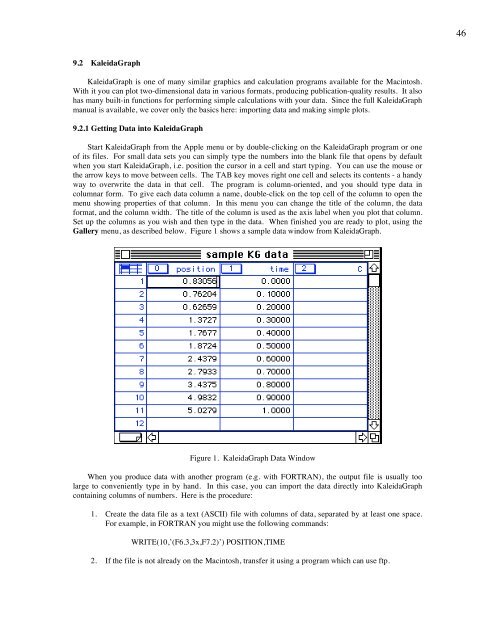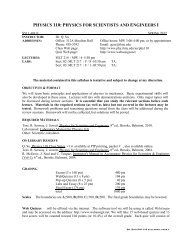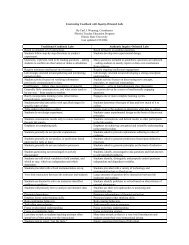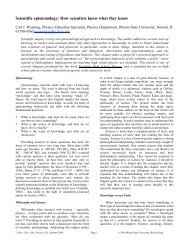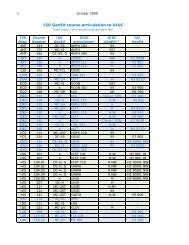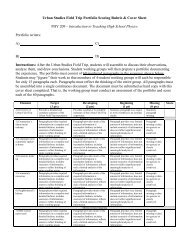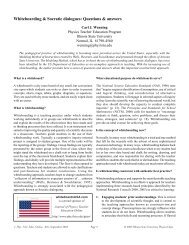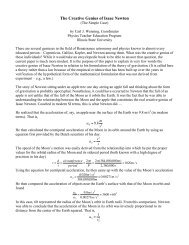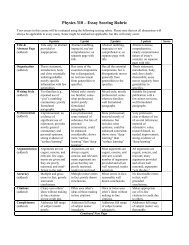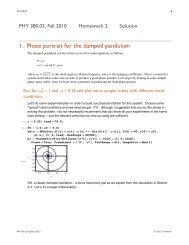Analysis_Software
Analysis_Software
Analysis_Software
Create successful ePaper yourself
Turn your PDF publications into a flip-book with our unique Google optimized e-Paper software.
46<br />
9.2 KaleidaGraph<br />
KaleidaGraph is one of many similar graphics and calculation programs available for the Macintosh.<br />
With it you can plot two-dimensional data in various formats, producing publication-quality results. It also<br />
has many built-in functions for performing simple calculations with your data. Since the full KaleidaGraph<br />
manual is available, we cover only the basics here: importing data and making simple plots.<br />
9.2.1 Getting Data into KaleidaGraph<br />
Start KaleidaGraph from the Apple menu or by double-clicking on the KaleidaGraph program or one<br />
of its files. For small data sets you can simply type the numbers into the blank file that opens by default<br />
when you start KaleidaGraph, i.e. position the cursor in a cell and start typing. You can use the mouse or<br />
the arrow keys to move between cells. The TAB key moves right one cell and selects its contents - a handy<br />
way to overwrite the data in that cell. The program is column-oriented, and you should type data in<br />
columnar form. To give each data column a name, double-click on the top cell of the column to open the<br />
menu showing properties of that column. In this menu you can change the title of the column, the data<br />
format, and the column width. The title of the column is used as the axis label when you plot that column.<br />
Set up the columns as you wish and then type in the data. When finished you are ready to plot, using the<br />
Gallery menu, as described below. Figure 1 shows a sample data window from KaleidaGraph.<br />
Figure 1. KaleidaGraph Data Window<br />
When you produce data with another program (e.g. with FORTRAN), the output file is usually too<br />
large to conveniently type in by hand. In this case, you can import the data directly into KaleidaGraph<br />
containing columns of numbers. Here is the procedure:<br />
1. Create the data file as a text (ASCII) file with columns of data, separated by at least one space.<br />
For example, in FORTRAN you might use the following commands:<br />
WRITE(10,’(F6.3,3x,F7.2)’) POSITION,TIME<br />
2. If the file is not already on the Macintosh, transfer it using a program which can use ftp.


